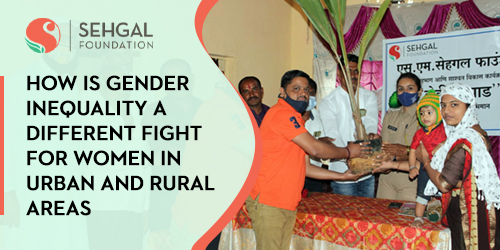By Raju Kumar
The 2025 International Women’s Day, themed ‘Accelerate Action,’ serves as a reminder of the urgent and effective measures needed to advance women’s empowerment. Women residing in urban slums continue to struggle for their rights, security, and aspirations. However, their struggles are exacerbated by social, political, and economic challenges, as well as societal and familial indifference. A closer look at the realities of women living in these settlements, which have expanded into metro cities, reveals that their struggles are not just limited to poverty and lack of resources. Instead, they are deeply intertwined with inequality, discrimination, migration, and socio-political neglect. In light of these realities, the 2025 International Women’s Day emphasizes the need for immediate and decisive action on women’s empowerment.
A large proportion of the urban slum population consists of migrants from rural areas. The situation is similar in small cities and state capitals. Migration to metropolitan areas occurs not only from villages but also from smaller towns. Over the past few decades, the lack of employment opportunities in rural and semi-urban areas has driven migration. Caste-based discrimination persists in villages, forcing marginalized Dalit communities to move to urban slums. As a result, a significant portion of these settlements’ populations comprises Dalit and Adivasi communities. Some families migrate to cities seeking better educational opportunities for their children. This migration pattern has persisted for decades, resulting in slums housing both generations-old residents and newly arrived families. While a few families manage to improve their socio-economic status and relocate, most remain in these settlements indefinitely. Urban slums face critical issues such as water scarcity, inadequate sanitation, unsafe public spaces, and a lack of healthcare and education facilities. Women bear the brunt of these hardships, which negatively impact their lives.
Additionally, there are social and cultural tensions between newly migrated families and long-term residents of these settlements. Conflicts arise due to resource scarcity, differences in traditions, languages, caste, and lifestyle disparities among families from various states and linguistic backgrounds. Women often bear the highest burden of this struggle, as they are responsible for maintaining family harmony and social integration. Many newly migrated women find themselves even more marginalized due to language barriers, which prevent them from accessing government schemes and community support groups.
Economically struggling families rely on women working as domestic helpers, sanitation workers, small artisans, or labourers in the informal sector. These women face challenges both at home and outside. Many travel far for work, but their safety in public transport remains a major concern. Workplace harassment is a common issue, and poorly lit streets in these settlements make night-time travel dangerous. Forced displacement due to urban redevelopment further worsens their struggles. Government and non-government organizations provide skill training for employment, but women often find limited opportunities for self-employment within slums or lack the means to work elsewhere.
Health and nutrition are often neglected by women in these settlements. Many start their day at 4 a.m., waiting in long queues for water, leaving little time for self-care. Healthcare facilities are inadequate, and when they fall ill, overcrowded and inefficient government hospitals pose additional challenges. Education remains a major hurdle for young girls. Many drop out during adolescence, as families prioritize household chores and sibling care over their schooling. Safety concerns further limit their mobility, forcing some to start working alongside their mothers at a young age.
Domestic violence is another grave issue for women in these settlements. Filing a police complaint is not easy, and those who muster the courage to do so often face societal and familial pressure to withdraw their complaints and return to abusive environments. Many women remain unaware of the legal aid and support networks available to them. Substance abuse, particularly alcoholism and gambling, is prevalent among men in these settlements, further exacerbating the economic and emotional burden on women, who are often forced to both earn and manage the household while enduring domestic violence.
The lack of safe community toilets further worsens women’s hardships. Many are forced to defecate in the open, exposing them to the risk of sexual abuse. In several cases, toilet facilities are located so far from their homes that women hold themselves back for hours, leading to severe health complications.
Despite these overwhelming challenges, the resilience of women in these settlements remains unwavering. They continue to fight for their rights, raise their collective voices, and keep the hope for change alive. Women’s Day should not just be an occasion to celebrate achievements but an opportunity to amplify the voices of countless women who struggle daily. The 2025 theme serves as a call to take rapid action to ensure every woman receives the rights, safety, and opportunities she rightfully deserves. (IPA Service)

 Canny Canadians Take The Fight Home To President Trump’s Tariffs
Canny Canadians Take The Fight Home To President Trump’s Tariffs 